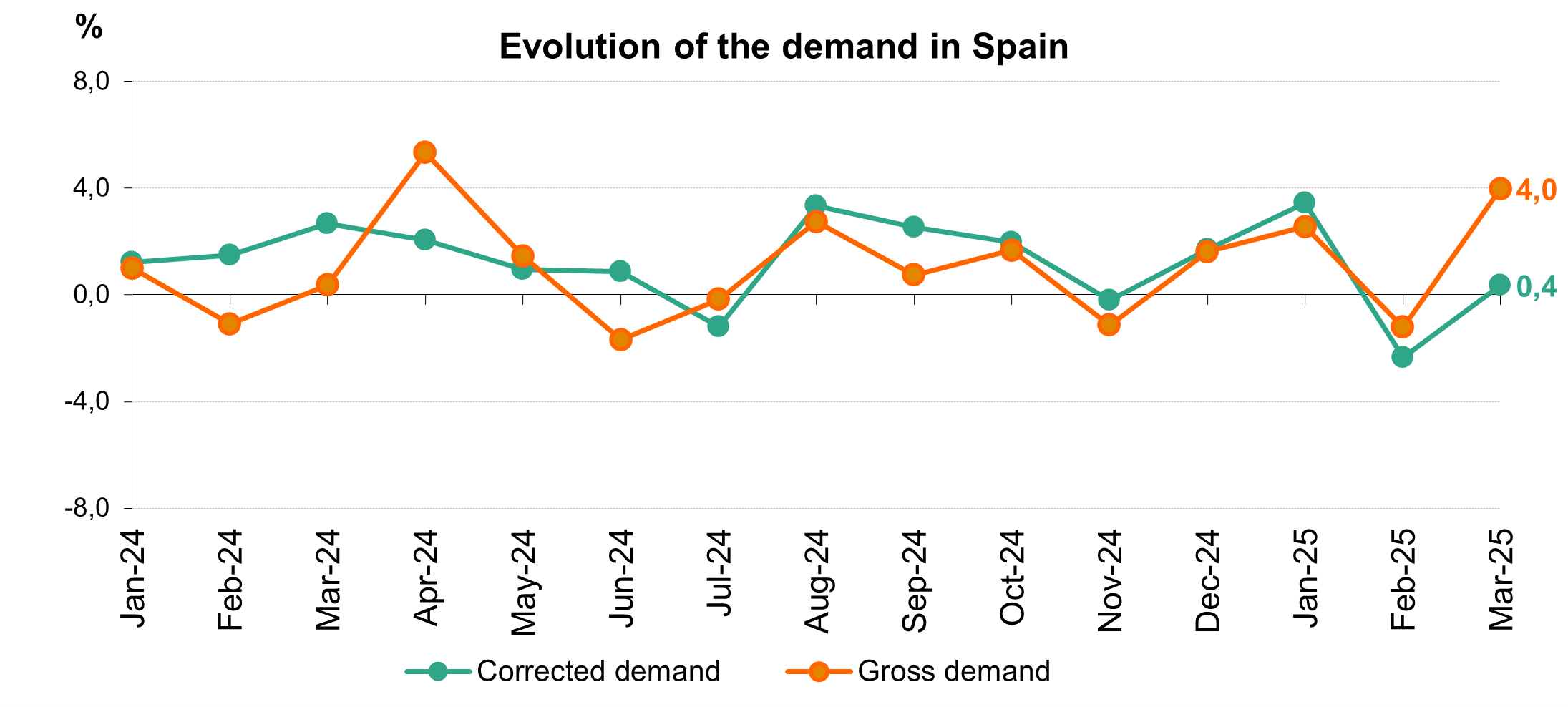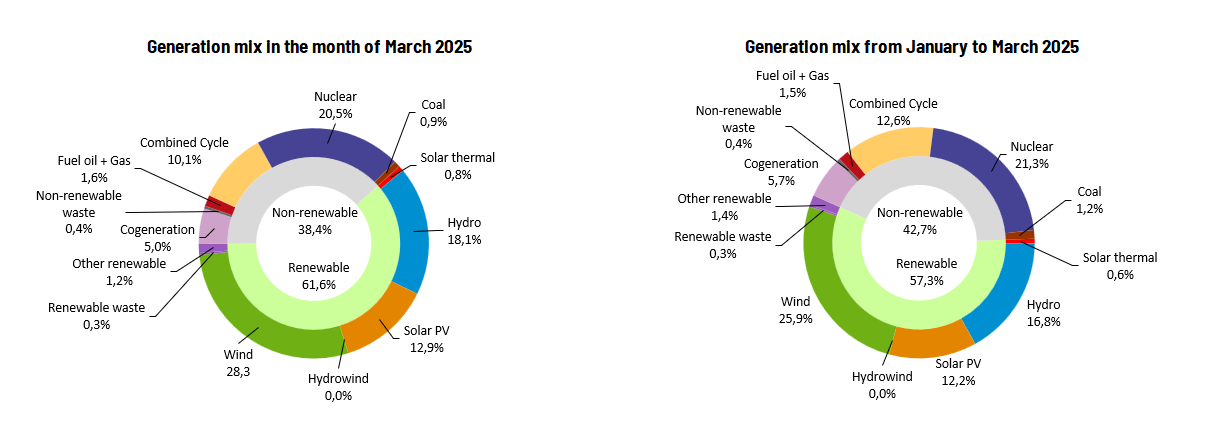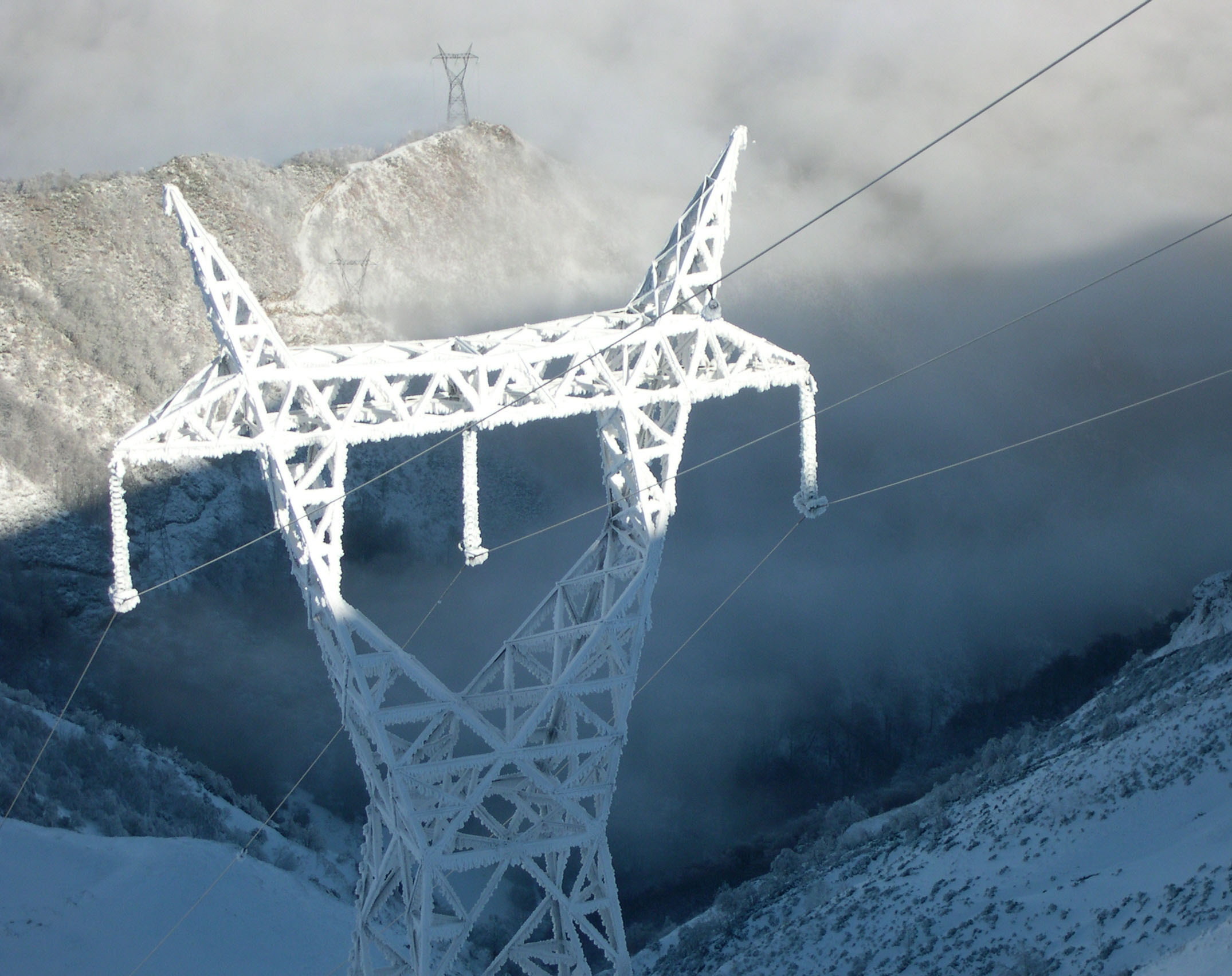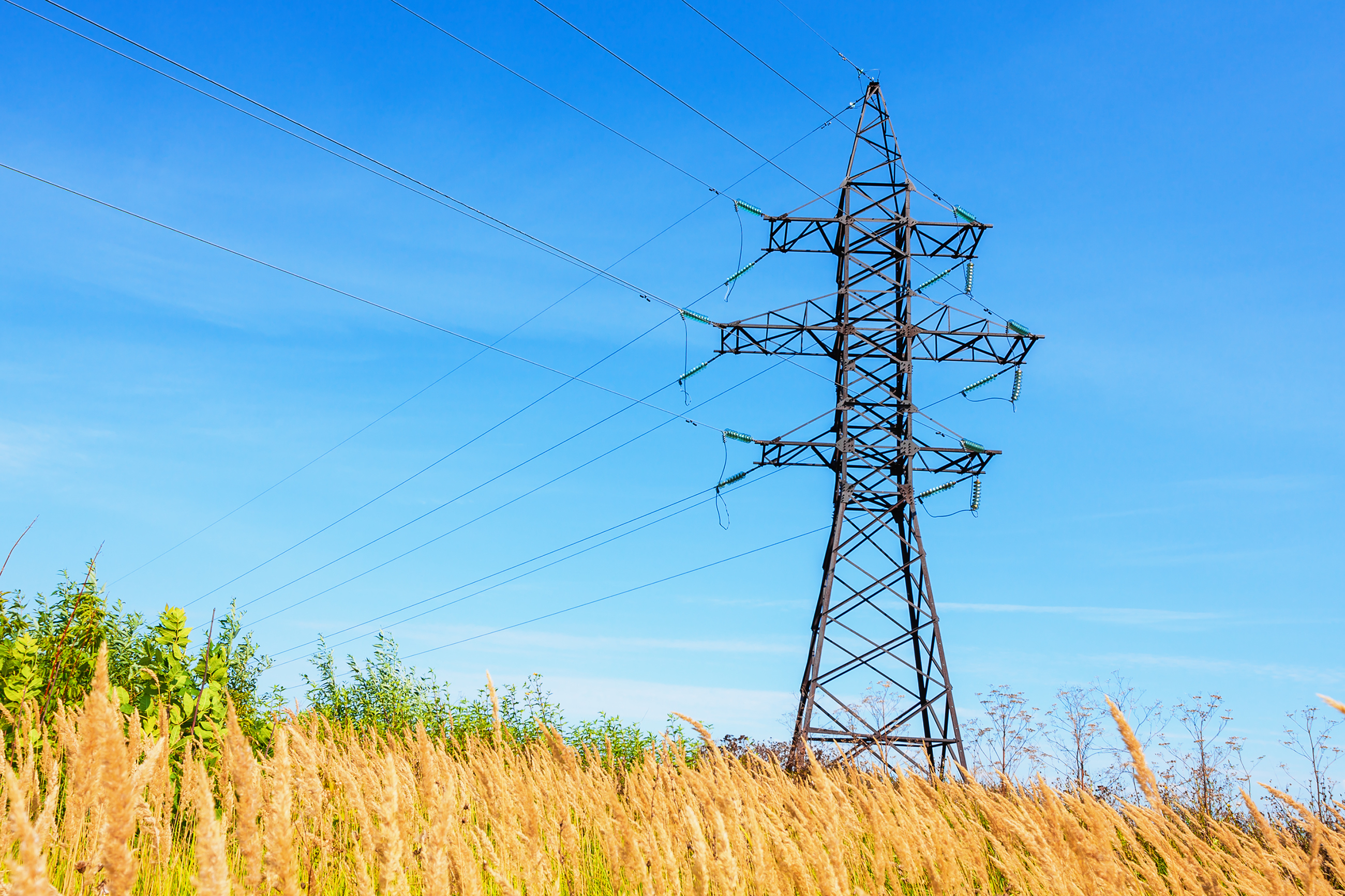For 40 years, we've been driving our country's economic and social progress. Four decades shaping Spain.
Electricity demand in Spain increased by 0.4% in March
Renewable energy sources reached an all-time monthly high of 14,588 GWh, 0.8% above the previous record set in March 2024, accounting for 61.6% of total generation.
Domestic electricity demand in March increased by 0.4% compared to the same month last year, after adjusting for the effects of working patterns and temperature. This represents an estimated gross demand of 21,539 GWh, marking a 4.0% increase compared to March 2024.

During the first quarter of the year, Spain recorded 64,551 GWh of electricity demand, an increase of 1.8% compared to the same period in 2024. However, when adjusted for the effects of calendar and temperature, demand increased by 0.6%.
In March, renewable generation increased by 0.8% with respect to the same period in 2024, reaching 14,588 GWh and setting a new all-time monthly record. As a result, renewables accounted for 61.6% of total generation, according to preliminary data available today. Furthermore, emission-free production accounted for 82.1% of total national generation.
Wind power remained the leading technology in March, generating 6,693 GWh. This represents 28.3% of total production and a year-on-year increase of 8.9% compared to the same period in 2024. It was followed by nuclear power (with a 20.5% share) and hydropower (which ranked third with 18.1% of the total—4,293 GWh). Meanwhile, solar photovoltaic recorded a monthly generation of 3,061 GWh. This represents 12.9% of total production, although it was 0.4% lower than in the same period of the previous year.

Additionally, 535 GWh of energy was allocated to storage facilities, while 1,616 GWh was scheduled for export to neighbouring countries. Therefore, this allowed for greater utilisation of the renewable energy generation.
Demand in the Peninsula increased by 0.3%
Peninsular demand was 0.3% higher than in March 2024, after factoring in the effects of working patterns and temperatures. In gross terms, demand this month was 20,310 GWh, 4% higher than in the same month last year.
So far in 2025, peninsular demand has reached 60,939 GWh. After adjusting this figure, it represents a 0.6% increase compared to the same period in 2024.
According to preliminary data, renewables accounted for 63.9% of total peninsular generation in March, producing 14,426 GWh—a 0.9% increase compared to the same month in 2024. This figure marks a record-high monthly renewable generation for the Peninsula, with 20 March recording the highest daily renewable generation in history (576.4 GWh). This new record surpasses the previous maximum recorded on 17 January 2024 (575.6 GWh). Furthermore, emission-free technologies contributed 85.4% of total generation.
The peninsular generation mix in March was once again led by wind power, which accounted for 29.3% of total production, generating 6,613 GWh.
The electricity system in the Balearic and Canary Islands
Electricity demand in the Balearic Islands in March 2025 was 4.1% higher than in March 2024, after adjusting for the effects of working patterns and temperatures. In absolute terms, monthly demand was estimated at 456,369 MWh, marking a 5.8% increase compared to the previous year. During the first three months of the year, electricity demand in the Balearic Islands reached 1,337,947 MWh, an increase of 3.7% compared to the same period in 2024.
In terms of electricity generation, the combined cycle remained the leading energy source, supplying 68.2% of the energy produced in the Balearic Islands. Meanwhile, renewable energy in the Balearic Islands accounted for 13.7% of total generation, although renewable production in the region decreased by 19.6% compared to the same month last year.
Additionally, the underwater link between the Peninsula and Majorca helped meet 24.9% of the Balearic Islands' electricity demand in March.
In the Canary Islands, electricity demand grew by 0.6% compared to the same month in 2024, after adjusting for the effects of working patterns and temperatures. This represents an estimated gross demand of 737,992 MWh, marking a 0.8% increase compared to March 2024. So far in 2025, cumulative electricity demand in the Canary Islands has reached 2,172,277 MWh, which is 0.3% lower than in the same period of the previous year.
With respect to generation, combined cycle remained the leading source, accounting for 42.3% of total production in March. Renewables contributed 15.6% of total generation, reaching 115,028 MWh—a 7.0% decrease compared to the same month in 2024. Wind energy accounted for 79,438 MWh (10.8% of total generation), while solar photovoltaic produced 35,528 MWh (4.8% of total generation).
Download












